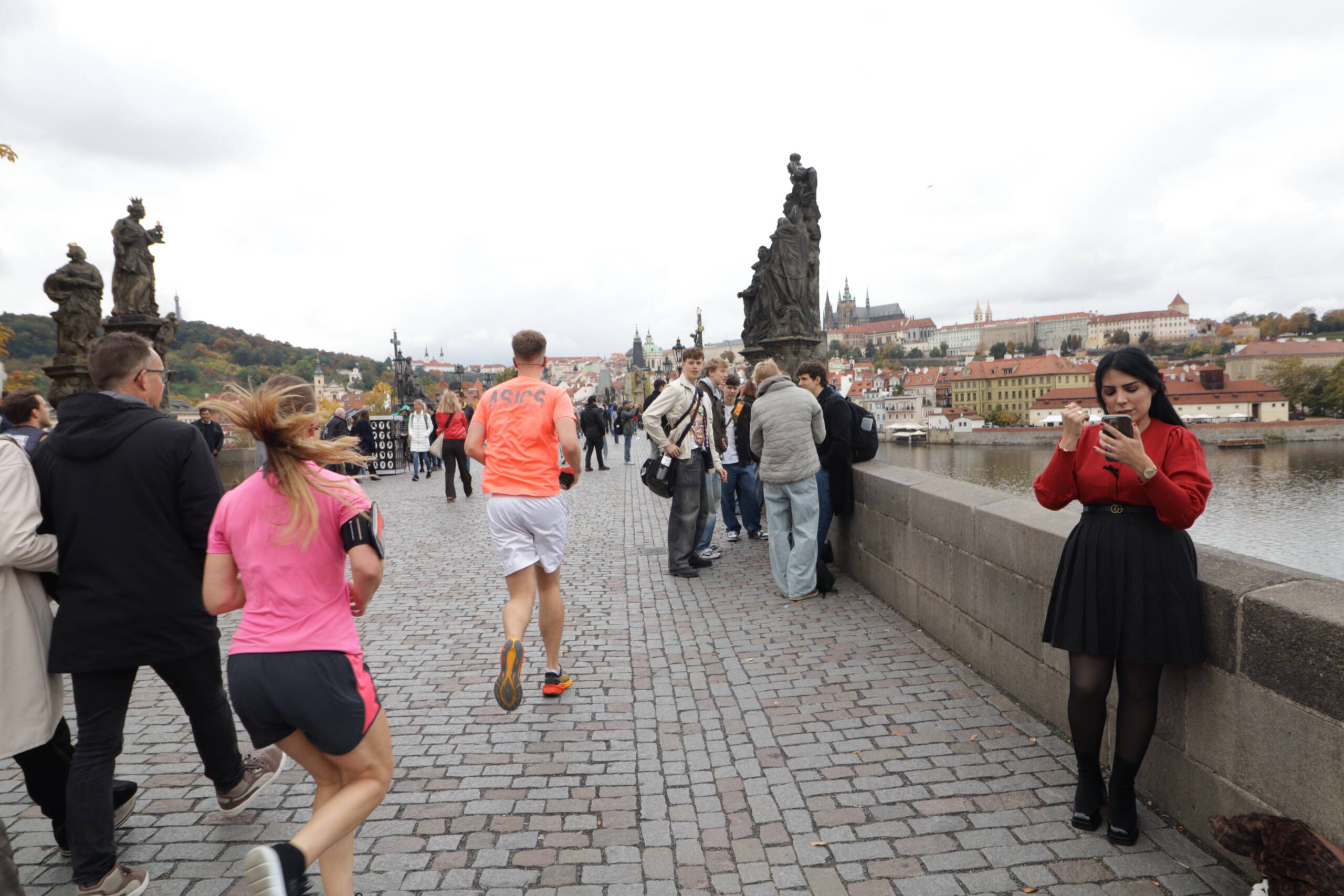Charles Bridge isn’t just a crossing over the Vltava — it’s a living organism, breathing in rhythm with the thousands of feet that touch its stones each day. In this image, the bridge feels alive with motion: runners in bright neon slicing through the slow current of tourists, friends clustered near the parapet lost in conversation, and a woman in a red sweater frozen in her own digital reverie, phone in hand, face softly lit by its glow. Around them rise the silhouettes of saints — unmoving sentinels of faith and time — while far beyond, Prague Castle crowns the horizon like a steady, watchful presence. It’s this clash of stillness and movement that defines the bridge: the eternal and the ephemeral sharing the same narrow path.

The air here is charged, almost theatrical. Each person adds a fleeting note to the city’s ongoing performance — a flash of color, a burst of laughter, a hurried jog, the click of a camera shutter. Even the uneven cobblestones seem to echo with stories of merchants, pilgrims, and dreamers who crossed long before the age of selfies and running apps. There’s a pulse to it, a rhythm that pulls you forward even when you try to stop and take it all in. Perhaps it’s because Charles Bridge never truly sleeps; it only shifts moods — from the sleepy calm of dawn to the buzzing midday crowd to the hushed glow of evening lamps reflected on the water.
To stand here is to feel history collide with the present, over and over again. You can almost sense the centuries pressing against your shoulders, while the crowd around you keeps the moment from freezing. That’s the magic — it’s never still. Every passing second rewrites the bridge’s story, as Prague quietly continues its endless dance between memory and motion.
Leave a Reply